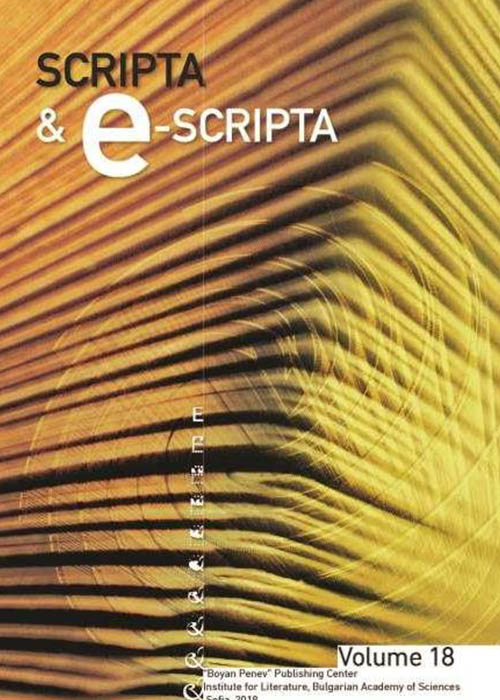Illuminated Manuscripts from the Family of the Hippiatrika Codex (Berlin, Staatsbibliothek, Phillipps 1538)

- Author(s): Elina N. Dobrynina
- Subject(s): Language studies // Language and Literature Studies // Theoretical Linguistics // Studies of Literature // Historical Linguistics // Comparative Linguistics // Philology // Translation Studies //
-
Published by: Institute for Literature BAS

- Print ISSN: 1312-238X
- Summary/Abstract:
Two manuscripts discussed in this paper – the Homilies of Gregory the Theologian GIM Syn. gr. 63 (Vlad. 144) and the Four Gospels ÖNB Theol. gr. 240 – were examined for a special study, the results of which were published in 2009 and 2013. They both are unique examples of tenth-century Byzantine book illustration, remarkable for their unusual ornamental style. The study revealed the decoration, datable to the 940s, as a work of one and the same artist, conditionally referred to as the ‘Master of the Arabesque Style’. His ornamental style is unique in the history of the Byzantine manuscript book, only existing for a short period and evidently corresponding to the activity of this one illuminator. The manuscript Berlin, Phillipps 1538, which contains a Treatise on Horse Medicine, has appeared in many publications. However, its artistic decoration has not yet received the elucidation it merits. After a new research using colour reproductions it transpired that many of the Berlin codex folios were actually decorated by the same artist as the Vienna and Synodal manuscripts. The assumption that one artist devised the three manuscripts under scrutiny brings to the conclusion that the Vienna Gospels should be classed among manuscripts from the Imperial scriptorium and dated to the period from 945 to 959. With regard to the development of minuscule script, the scribe responsible for the Hippiatrika obviously was regarded as a distinguished calligrapher, whose earliest activities should be sought in the first quarter of the century. The archaic characteristics found in the codex are in accordance with the illumination. Therefore the Berlin manuscript should be used as a reference for the attribution of manuscripts from the second half of the tenth century.
Journal: Scripta & e-Scripta vol. 14-15, 2015
-
Page Range: 365-372
No. of Pages: 8
Language: English - LINK CEEOL: https://www.ceeol.com/search/article-detail?id=418026
-
Elina N. DobryninaSenior Research Fellow, State Institute of Art Studies, Moscow; Grabar Art Conservation Centre, Moscow, Russia
-
SUBJECT: Language studies // Language and Literature Studies // Theoretical Linguistics // Studies of Literature // Historical Linguistics // Comparative Linguistics // Philology // Translation Studies //KEYWORDS:
-